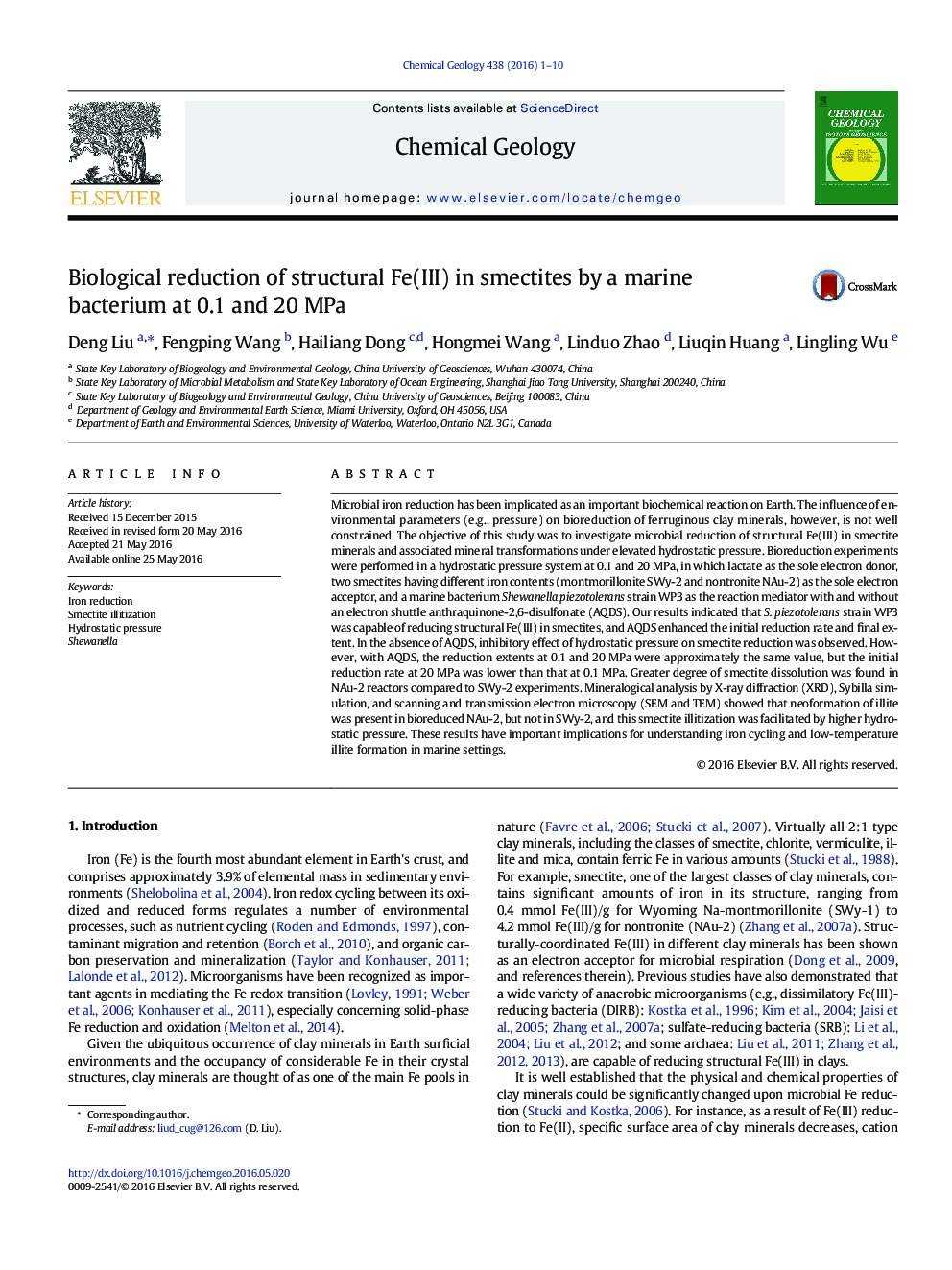| کد مقاله | کد نشریه | سال انتشار | مقاله انگلیسی | نسخه تمام متن |
|---|---|---|---|---|
| 6436056 | 1637536 | 2016 | 10 صفحه PDF | دانلود رایگان |

Microbial iron reduction has been implicated as an important biochemical reaction on Earth. The influence of environmental parameters (e.g., pressure) on bioreduction of ferruginous clay minerals, however, is not well constrained. The objective of this study was to investigate microbial reduction of structural Fe(III) in smectite minerals and associated mineral transformations under elevated hydrostatic pressure. Bioreduction experiments were performed in a hydrostatic pressure system at 0.1 and 20Â MPa, in which lactate as the sole electron donor, two smectites having different iron contents (montmorillonite SWy-2 and nontronite NAu-2) as the sole electron acceptor, and a marine bacterium Shewanella piezotolerans strain WP3 as the reaction mediator with and without an electron shuttle anthraquinone-2,6-disulfonate (AQDS). Our results indicated that S. piezotolerans strain WP3 was capable of reducing structural Fe(III) in smectites, and AQDS enhanced the initial reduction rate and final extent. In the absence of AQDS, inhibitory effect of hydrostatic pressure on smectite reduction was observed. However, with AQDS, the reduction extents at 0.1 and 20Â MPa were approximately the same value, but the initial reduction rate at 20Â MPa was lower than that at 0.1Â MPa. Greater degree of smectite dissolution was found in NAu-2 reactors compared to SWy-2 experiments. Mineralogical analysis by X-ray diffraction (XRD), Sybilla simulation, and scanning and transmission electron microscopy (SEM and TEM) showed that neoformation of illite was present in bioreduced NAu-2, but not in SWy-2, and this smectite illitization was facilitated by higher hydrostatic pressure. These results have important implications for understanding iron cycling and low-temperature illite formation in marine settings.
Journal: Chemical Geology - Volume 438, 2 November 2016, Pages 1-10